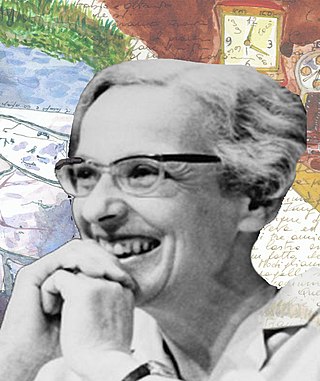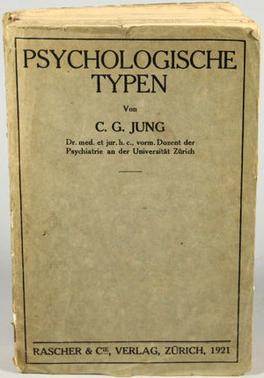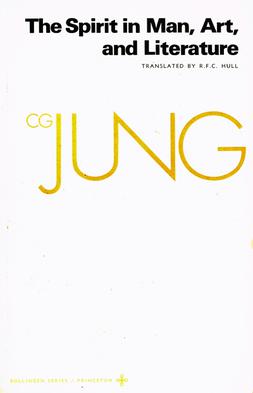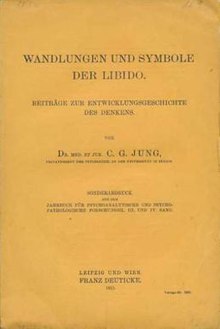
Carl Gustav Jung was a Swiss psychiatrist, psychotherapist, psychologist and pioneering evolutionary theorist who founded the school of analytical psychology. He was a prolific author, illustrator, and correspondent, and a complex and controversial character, perhaps best known through his "autobiography" Memories, Dreams, Reflections.
Collective unconscious refers to the unconscious mind and shared mental concepts. It is generally associated with idealism and was coined by Carl Jung. According to Jung, the human collective unconscious is populated by instincts, as well as by archetypes: ancient primal symbols such as The Great Mother, the Wise Old Man, the Shadow, the Tower, Water, and the Tree of Life. Jung considered the collective unconscious to underpin and surround the unconscious mind, distinguishing it from the personal unconscious of Freudian psychoanalysis. He believed that the concept of the collective unconscious helps to explain why similar themes occur in mythologies around the world. He argued that the collective unconscious had a profound influence on the lives of individuals, who lived out its symbols and clothed them in meaning through their experiences. The psychotherapeutic practice of analytical psychology revolves around examining the patient's relationship to the collective unconscious.

Analytical psychology is a term coined by Carl Jung, a Swiss psychiatrist, to describe research into his new "empirical science" of the psyche. It was designed to distinguish it from Freud's psychoanalytic theories as their seven-year collaboration on psychoanalysis was drawing to an end between 1912 and 1913. The evolution of his science is contained in his monumental opus, the Collected Works, written over sixty years of his lifetime.

Marie-Louise von Franz was a Swiss Jungian psychologist and scholar, known for her psychological interpretations of fairy tales and of alchemical manuscripts. She worked and collaborated with Carl Jung from 1933, when she met him until he died in 1961.
Puer aeternus in mythology is a child-god who is eternally young. In the analytical psychology of Carl Jung, the term is used to describe an older person whose emotional life has remained at an adolescent level, which is also known as "Peter Pan syndrome", a more recent pop-psychology label. In Jung's conception, the puer typically leads a "provisional life" due to the fear of being caught in a situation from which it might not be possible to escape. The puer covets independence and freedom, opposes boundaries and limits and tends to find any restriction intolerable.
The Jungian interpretation of religion, pioneered by Carl Jung and advanced by his followers, is an attempt to interpret religion in the light of Jungian psychology. Unlike Sigmund Freud and his followers, Jungians tend to treat religious beliefs and behaviors in a positive light, while offering psychological referents to traditional religious terms such as "soul", "evil", "transcendence", "the sacred", and "God". Because beliefs do not have to be facts in order for people to hold them, the Jungian interpretation of religion has been, and continues to be, of interest to psychologists and theists.

Théodore Flournoy was a Swiss professor of psychology at the University of Geneva and author of books on parapsychology and spiritism. He studied a wide variety of subjects before he devoted his life to psychology. He did extensive observations on a participant to investigate psychical phenomena. He was the President of the Sixth International Congress of Psychology, the Chair of Experimental Psychology at the University of Geneva in 1891 and was the first professor of psychology in Europe to become a member of the Faculty of Sciences instead of the Faculty of Philosophy.

Psychological Types is a book by Carl Jung that was originally published in German by Rascher Verlag in 1921, and translated into English in 1923, becoming volume 6 of The Collected Works of C. G. Jung.
Psychology and Alchemy, volume 12 in The Collected Works of C. G. Jung, is Carl Jung's study of the analogies between alchemy, Christian dogma, and psychological symbolism.

The Collected Worksof C. G. Jung is a book series containing the first collected edition, in English translation, of the major writings of Swiss psychiatrist Carl Gustav Jung.
Jungian archetypes are a concept from psychology that refers to a universal, inherited idea, pattern of thought, or image that is present in the collective unconscious of all human beings. The psychic counterpart of instinct, archetypes are thought to be the basis of many of the common themes and symbols that appear in stories, myths, and dreams across different cultures and societies. Some examples of archetypes include those of the mother, the child, the trickster, and the flood, among others. The concept of the collective unconscious was first proposed by Carl Jung, a Swiss psychiatrist and psychoanalyst.
The Philemon Foundation is a non-profit organization that exists to prepare for publication the Complete Works of Carl Gustav Jung, beginning with the previously unpublished manuscripts, seminars and correspondences. It is estimated that an additional 30 volumes of work will be published and that the work will take three decades to complete.

Christiana Drummond Morgan was a lay psychologist, artist, and co-director of the renowned Harvard Psychological Clinic. She is best known for co-authoring the Thematic Apperception Test, one of the most widely used projective psychological tests. Morgan played a crucial yet often overlooked role in the development of 20th-century psychology, particularly through her collaboration with Carl Jung and her pioneering work in Jungian and feminist psychology. Her contributions gained renewed recognition with Claire Douglas’s 1993 biography, "Translate This Darkness," and subsequent scholarly interest.

This is a list of writings published by Carl Jung. Many of Jung's most important works have been collected, translated, and published in a 20-volume set by Princeton University Press, entitled The Collected Works of C. G. Jung. Works here are arranged by original publication date if known.
Beatrice Moses Hinkle (1874–1953) was a pioneering American feminist, psychoanalyst, writer, and translator.
Jolande Jacobi was a Swiss psychologist, best remembered for her work with Carl Jung, and for her writings on Jungian psychology.
Participation mystique, or mystical participation, refers to the instinctive human tie to symbolic fantasy emanations. According to Carl Jung, this symbolic life precedes or accompanies all mental and intellectual differentiation. The concept is closely tied to that of projection because these contents, which are often mythological motifs, project themselves into situations and objects, including other persons.

The Origins and History of Consciousness is a 1949 book by the psychologist and philosopher Erich Neumann, in which the author attempts to "outline the archetypal stages in the development of consciousness". It was first published in English in 1954 in a translation by R. F. C. Hull. The work has been seen as an important and enduring contribution to Jungian thought.

The Great Mother: An Analysis of the Archetype is a book discussing mother goddesses by the psychologist Erich Neumann. The dedication reads, "To C. G. Jung friend and master in his eightieth year". Although Neumann completed the German manuscript in Israel in 1951, The Great Mother was first published in English in 1955. The work has been seen as an enduring contribution to the literature inspired by Jung, and was the first to analyze an archetype with such depth and scope.
The theories of Carl Jung are grounded in his evolutionary conception of human brain evolution. This had led to a resurgence of research into his work, beginning in the early 2000s, from the perspective of contemporary neuroscience. Much of this work looks at Jung's theories of a genetically inherited 'collective unconscious' common to all of humankind. This hypothesis was postulated by Jung in his efforts to account for similar patterns of behaviour and symbolic expression in myth, dream imagery and religion in various cultures around the world. Jung believed that the 'collective unconscious' was structured by archetypes - that is species typical patterns of behaviour and cognition common to all humans. Contemporary researchers have postulated such recurrent archetypes reside in 'environmentally closed' subcortical brain systems that evolved in the human lineage prior to the emergence of self-consciousness and the uniquely human self-reflective ego.









